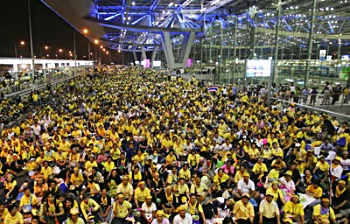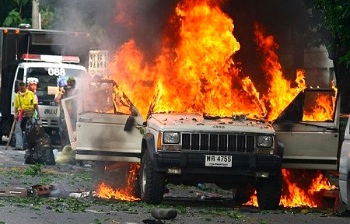News is just coming through that Thailand’s Constitutional Court has disbanded the ruling People Power Party for electoral fraud, and banned prime minister Somchai Wongsawat (สมชาย วงศ์สวัสดิ์) and 35 others on the party’s executive from politics for 5 years.
What happens next is up to the Red Shirts, the pro-Thaksin loyalists. As I explained in my backgrounder, the People’s Alliance for Democracy (พันธมิตรประชาชนเพื่à¸à¸›à¸£à¸°à¸Šà¸²à¸˜à¸´à¸›à¹„ตย) wanted the PM to resign, so their aim has been achieved. Will the Red Shirts accept the ruling, though? Or will they turn violent? Certainly the Red Shirts are the more violent of the two factions.
Breaking News says AP reports that the second and third parties in the coalition, Matchima and Chart Thai, have also been dissolved.
I’m guessing the army is ready to roll. We’ll find out any moment…


